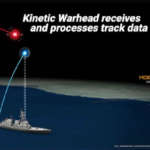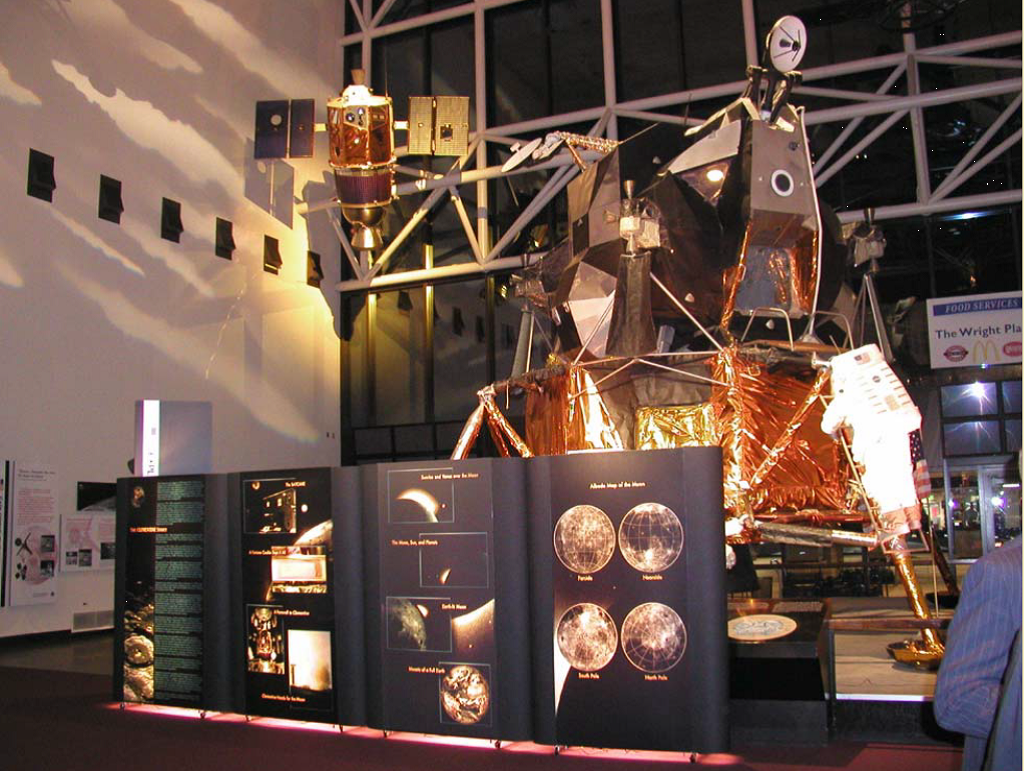On November 17, 2020, the Missile Defense Agency (MDA) conducted a potentially very consequential test of the Navy’s Aegis Ballistic Missile Defense (BMD) capability — hopefully indicating a major step toward realizing this vision of the George H.W. Bush administration and 1995 Heritage Foundation’s Team B.
Click here for the Navy’s public release describing this important test that includes an impressive video showing how the operational crew of the USS John Finn Destroyer (DDG-113) operating near Hawaii intercepted an Intercontinental ballistic missile (ICBM) target launched from the Ronald Reagan Ballistic Missile Defense Test Site, over 2000 miles away on Kwajalein Atoll in the Marshall Islands in the South Pacific.
This important BMD “intercept” also validated the “launch-on remote” capability of the nation’s global (ground, air, sea and space) Command and Control Battle Management Communications (C2BMC) network of sensors to support BMD interceptors, wherever based. This network can provide critical warning and tracking information to enable a global BMD system against ballistic missiles of any range more than a few hundred miles; and now 40 or so Aegis destroyers and cruisers can provide that intercept capability if they are properly armed and can get close enough to the attacking missile.
Lest we forget, note that these possibilities were explored in detail by President Ronald Reagan’s Strategic Defense Initiative (SDI) — particularly during and following my early 1990 presidentially-initiated review of the SDI program.
I recommended to Defense Secretary Dick Cheney and President George H.W. Bush that the SDI be redirected away from its initial focus on deterring a major ICBM attack on the U.S. homeland to providing a global defense against ballistic missile attacks on our homeland and our overseas troops, friends and allies. They agreed and Secretary Cheney asked me to become the third SDI Director and “make it happen.” I agreed and did my best to answer his (and President Bush’s) call!
So, why has it taken so long? What happened during the next three decades?
Immediately as I assumed my SDI charge, the Navy’s Aegis system became a key component of my proposal as briefed to and approved by President Bush and Secretary Cheney — in the context of refocusing the SDI program into what we called the Global Defense Against Limited Strikes (GPALS) initiative.
Its focus on a global defense for the first time combined the roles of both Theater Missile Defense (TMD) and National Missile Defense (NMD) (or Homeland Defense) basing concepts, along with space-based components — particularly the Brilliant Pebbles space-based interceptor system.
Click here for the annotated February 12, 1991 Pentagon press briefing by the Assistant Defense Secretary for International Security Policy, Stephen J. Hadley, and myself after President George H.W. Bush approved this new approach. (Rotate the pages for ease of reading the annotated language.)
The proposed Aegis BMD system (then called Aegis TMD) was to be a TMD system. Otherwise, the ABM Treaty’s Article V would have blocked even the testing of the concept that clearly promised to be an important global capability, because most of the earth’s surface is water — and accessible by our Aegis ships.
Even before then, it was clear to Vice Admiral J.D. Williams, then Director of Naval Warfare, and me that a defense against ICBMs was an inherent capability if/when we were free to develop it. But we advised then Chief of Naval Operations (CNO) Admiral Frank Kelso that he must not permit the Navy to exploit that inherent capability, because the ABM Treaty would block even the testing of this important system, even for TMD capability.
For decades — and even after President George W. Bush withdrew from the ABM Treaty in 2002, that initial constraint weighed heavily against the development of what I consider to be today’s most reliable and cost-effective operational BMD system, now deployed around the world on about 40 Aegis Cruisers and Destroyers, though still mostly restricted to a TMD role. When politically possible, space-based BMD systems can be even more cost-effective. Such space-based BMD systems were technically, but not politically, viable three decades ago.
Now, thankfully due to the initiatives of the Trump administration — and at the direction of Congress, the Navy has unmistakably demonstrated what we long ago understood was an inherent Aegis BMD capability, including to play an important homeland defense role.
Notably, it already plays that homeland defense role for Japan, which has partnered for years with the United States in developing, purchasing and operating the Aegis BMD system for that purpose.
Indeed, during the George W. Bush administration, Japan was critically important by bringing key funds and imposing its requirements into Pentagon decision making. Otherwise, the Pentagon “powers that be” were posturing to develop a very large interceptor that would not fit into the existing Aegis launch tubes, and that programmatic direction would have delayed and alienated the Navy’s development of its Aegis BMD system.
Just to emphasize other difficulties that have blocked progress, consider our efforts to rectify the situation after the Clinton administration gutted the SDI program in early 1993, when Defense Secretary Les Aspin bragged that he “took the stars out of Star Wars.” Indeed, he did — essentially all advanced technology efforts were abruptly ended.
Moreover, the then Pentagon “powers that be” directed the Huntsville authorities to return proposals (unopened) from several contractors to begin a Ground-based Interceptor (GBI) National Missile Defense demonstration and validation (DemVal) program that had been approved by the Pentagon’s top Acquisition Authority during the Bush-41 administration.
So committed were the Clintonistas to Mutual Assured Destruction (MAD) as the “cornerstone of strategic stability” — and echoes of that religion are apparent following the recent Aegis BMD anti-ICBM test. Click here, for example.
Thus ended the first chapter of the GPALS initiative, almost 27 years ago.
The next major factor began in late 1994 when the House Republicans achieved majority status for the first time in a generation. The new Republican leadership had shared President Reagan’s SDI vision — and a number of us sought, successfully it turned out, to get their support in redirecting the stuttering focus during the subsequent stages of the Clinton administration.
Dr. Lowell Wood (from Livermore National Laboratories and the prime mover behind SDI’s Brilliant Pebbles space-based interceptor concept) and I traveled to Philadelphia to meet (on the margins of a conference of the new House members) with Rep. Jack Kemp (R-NY) to urge that a “Team B” be established at the Heritage Foundation to help lay plans for such a revival, especially in view of Newt Gingrich’s leadership as Speaker.
Jack, in turn, persuaded the Heritage Foundation’s President Dr. Edwin Feulner to establish such a team, which I was privileged to lead for the next several years as a Heritage Visiting Fellow, to map future technically advanced possibilities for our friends in congress and elsewhere to pursue.
The Missile Defense Study Team is given below along with a picture of our 1995 report cover. Note that the recent Under Secretary of Defense for Research and Engineering, Dr. Michael Griffin, was a member of this Heritage Team B. Mike retained our vision from a quarter century ago — actually from three decades ago, and was armed with even more advanced technology to make it happen!
But while he and other Trump authorities revived major interest in space-based sensors, he was not able to revive President Reagan’s SDI interest in the key role of space-based defenses — even in the context of President Trump’s Space Force initiative. But I digress…..
In our 1995 Heritage Team B report, we argued that we should never give the Russians a “veto” over our missile defense programs; and urged the Clinton administration in its negotiations with Russia to pursue a cooperative program that ultimately would include space-based defenses.
Such an effort would have fit with Russia’s President Boris Yeltsin’s January 1991 call that we work together to build a “Joint Global Defense” for the world community, subsequently abandoned by both the U.S. and Russia. In our subsequent 1998 and 1999 Heritage reports, we called for the U.S. to declare the ABM Treaty to be “null and void” in the absence of our treaty partner, the Soviet Union, and “to build the best missile defenses that technology permits.”
We also again repeated our observation that the SDI recommended “first from the sea, then from space” approach would create the most effective, complete and responsible global defense system for the United States.” This never happened during the remainder of the Clinton administration, and we were gratified when President George W. Bush withdrew from the ABM Treaty in 2002 — and thought we were on our way to realizing our long-sought objective.
But we were to be disappointed. In particular, we saw no revival of the key SDI programs that had led to “Brilliant Pebbles” space-based interceptor effort, initiated in the latter days of the Reagan administration and continued through my watch in the Bush-1 administration as a fully approved DemVal program. Actually, during this Bush-43 administration era (and subsequently), China took much greater advantage of those key SDI technology developments than did we. And now, we are playing “catch-up” as a consequence.
Click here for the still pertinent 2009 report of the Independent Working Group published by the Institute for Foreign Policy Analysis, “Missile Defense, The Space Relationship & the Twenty-First Century” — especially Appendix B. This important report at the end of the Bush-43 years gave no indication that there had been any interest in reviving the most important innovation of the SDI years.
However, thanks to the efforts of then Assistant Defense Secretary J.D. Crouch and his Deputy Keith Payne, President Bush directed that Aegis BMD system development efforts be continued, but still it authorized only TMD applications despite its inherent capabilities to provide homeland defense capabilities. This constraint against developing anti-ICBM capabilities was troubling, especially after President Bush withdrew from the ABM Treaty and its former constraints that had blocked such development.
Moreover, key efforts for Aegis BMD to include key SDI technologies pioneered in its Brilliant Pebbles program under Presidents Reagan and Bush-41 were cancelled by George W. Bush administration authorities even though detailed studies by the Navy’s BMD program office had demonstrated during the latter days of the Clinton administration that those technologies could enable a much lighter Aegis BMD kill vehicle and provide a much greater defense footprint than was then the Bush-43 “school solution.”
An exceptional team of engineers and scientists had space qualified those technologies in the mid-1990s on the Clementine Mission initiated as one of my last acts as SDI Director with NASA’a full cooperation, especially from NASA Administrator Daniel Goldin. Dan had previously led TRW’s Brilliant Pebbles effort as one of the two survivors of a five-contractor team competition in a Demonstration and Validation (DemVal) program approved by the Pentagon’s top acquisition authorities.
That mission employed scavenged Brilliant Pebbles sensors and other technology from Lawrence Livermore National Laboratory, and under program integration leadership from the Naval Research Laboratory, returned to the Moon in the mid-1990s for the first time in a quarter century, mapped the entire Moon’s surface in over a million frames of data in 13-spectral bands, discovered water in the polar regions, and received awards from NASA and the National Academy of Sciences. See the photo below of a Clementine replica in an honored place, next to a Lunar Lander, in the Smithsonian. Click here for my April 10, 2018 discussion of this important award-winning mission and related activities that space-validated key components of the SDI Brilliant Pebbles effort.
But then, the Clinton administration cancelled a follow-on Clementine mission intended to fly-by a deep space asteroid, because, as the White House NSC spokesman said, of the associated technology’s SDI origin. Moreover, continuing lack of Pentagon support during the George W. Bush, or Bush-43, administration put even continuing such research and development out of business and dispersed the technical team that had pioneered this important work, illustrating again that “no good deed goes unpunished” when it comes to building truly effective defenses.
That same technological capability not only would have enabled a viable more capable sea-based homeland defense, much less expensive and more effective than the ground-based defense that became the Bush-43 hallmark. In my opinion, it also would have set the stage for reviving the Brilliant Pebbles space-based interceptor program — development of which was no longer constrained in any way after 2002 by the subsequently defunct ABM Treaty. And it would have revitalized our Heritage Team B recommendation “First from the sea, then from space.”
Thanks to support from our Japanese allies — including significant funding, the Navy’s BMD program has developed the systems now deployed on several of their Aegis BMD ships and 40 or so of ours. They demanded that the Standard Missile-3 interceptor fit in the existing Aegis infrastructure rather than develop a new larger diameter interceptor as some of Pentagon leaders wanted (but not the U.S. Navy) — otherwise the cost of those programs would have escalated and the Navy would no doubt have abandoned the program.
Land based versions, called Aegis Ashore are operational in Romania and Poland. Japan is buying sites to help defend against North Korean ballistic missiles, and others are interested in following suit, including the possibility of deploying Aegis Ashore BMD systems — composed of key Aegis system components deployed on land. (I understand that we are adapting our Aegis Ashore capability to defend Hawaii against North Korean ICBMs, and argue that we also should be deploying Aegis Ashore sites on our military bases around the Gulf of Mexico and perhaps along our East and West Coasts.)
Notably in 2008, the first generation Aegis BMD system (with the then initially tested SM-3 IA) was chosen by President G.W. Bush as the best system for shooting down a dying National Reconnaissance Office (NRO) satellite, indicating again the inherent capability of the Aegis BMD system to perform a homeland defense mission, a mission finally being considered in the Trump administration plans. Satellites move at a comparable velocity to that of ICBMs.
So there was no need to wait for the SM-3 Block IIA to achieve an ability to shoot down ICBMs — as VADM J.D. Williams and I have advocated since our participation on the Heritage Team B efforts of the 1990s. Better late than never, I suppose.
More importantly, we have finally seen an important realization of one of the promises President-elect Trump made in his September 2016 speech in Philadelphia:
“We propose to rebuild the key tools of missile defense, starting with the Navy cruisers that are the foundation of our missile defense capabilities in Europe, Asia and the Middle East. As we expand our Navy toward the goal of 350 ships, we will also procure additional modern destroyers that are designed to handle the missile defense mission in the coming years.”
And I hope that the future somehow holds a way to revive the companion space-based defense system advocated by the SDI program and the Heritage Foundation’s Team B in 1995. It is clear that the technology is available to do so, the question is whether we have the political wit and savvy to make it happen.
Bottom Lines.
The test last week demonstrated that we can provide a global defense from the sea. Now the second part is a challenge for the Space Force and associated “powers that be.”
And we can expect a challenge from the arms control community that is already marshaling its forces to block even further exploitation of last week’s important Aegis BMD test. Click here for example.
This is a challenge with today’s divided political leadership, but we’ve also been there before — so, we should press ahead however we can, while praying for the future for our nation.
What can you do?
Join us in praying for our nation, and for a rebirth of the freedom sought, achieved and passed to us by those who came before us.
Help us to spread our message to the grass roots and to encourage all “powers that be” to provide for the common defense as they are sworn to do.
Begin by passing this message to your friends and suggest they visit our webpage www.highfrontier.org, for more information. Also, please encourage your sphere of influence to sign up for our weekly e-newsletter.
Encourage them to review our past email messages, posted on www.highfrontier.org, to learn about many details related to the existential man-made and natural EMP threats and how we can protect America against them. I hope you will help us with our urgently needed efforts, which I will be discussing in future messages.
Click here to make a tax deductible gift. If you prefer to mail a check, Please send it High Frontier, 20 F Street 7th Floor, Washington, DC 20001.
E-Mail Message 201201
Please click here to read Past Weekly Updates!
Please help High Frontier continue this important and timely work!
Be sure to follow us on our Social Sites!
If you found this letter via our Social Sites, and you would like to subscribe, please click below!







